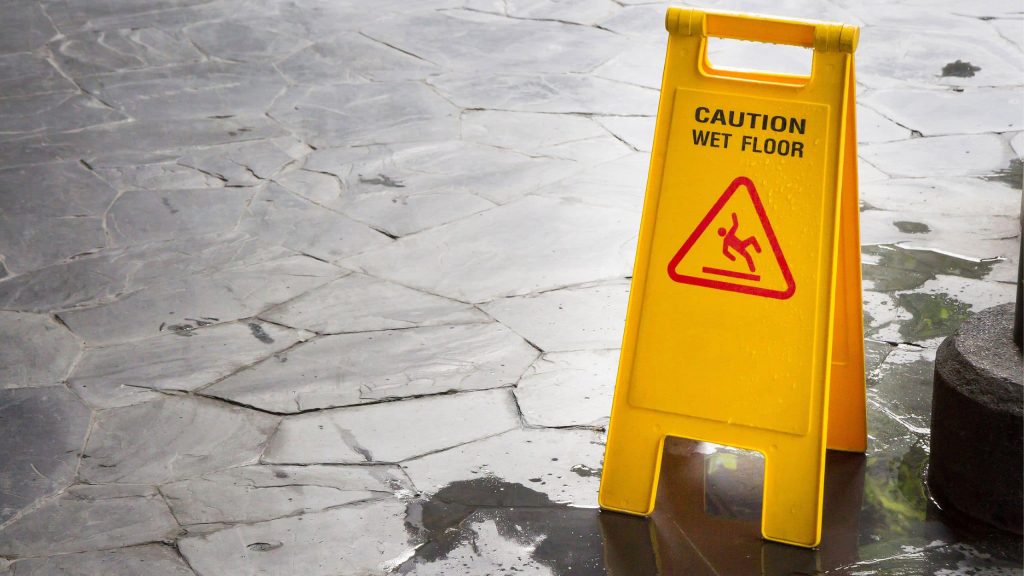Workplace safety is the responsibility of business owners and that means that they have to take the necessary steps to make sure that risks are minimised. A trip hazard could be something as simple as a cable being run across a walkway although there are many different possible risks when it comes to trips and slips. So, let’s look at trips and slips in more detail.
Slips
Slips in the workplace can be caused in many ways and it is understanding how they can occur that can help you take the right action. When it comes to slips, there is a slip potential model that can be followed and this means that slips can be caused by contamination, cleaning, people, flooring, environment and even footwear.
Contamination – This is involved in most slips and this is any liquid or contaminant that makes its way onto the floor and can include rainwater through to dust.
Cleaning – Even after cleaning away the contaminants, the risk of slips can still remain. This is because cleaning will involve cleaning products, trailing cables and wet floors.
People – The actions that people take can also cause slips. They might spill liquids and not deal with it or wear incorrect footwear while they might also rush around while carrying objects.
Flooring – Incorrect flooring can also be a cause of slips. They have to be fit for purpose and in good condition as well as free of obstructions.
Environment – This can include a whole range of factors such as natural light, noise, weather, condensation and many other things that could lead to a slip.
Footwear – The right footwear is vital when it comes to avoiding slips. Footwear has to offer the right grip while it still has to provide comfort.
Slips can be prevented by using the right products such as Dry Disconnect Couplers as this can help to prevent the loss of liquids during loading and this prevents hazards.
Trips
Obstructions are often the main cause of trips in walkways while they are also caused by uneven surfaces and so, avoiding these kinds of accidents is relatively easy. An example of this is the IFC Inflow’s Hoseload system whereby the hose is supported off the floor which means it no longer becomes a hazard or obstacle.
Trips are easier to minimise as it is easier to implement walkways in places that are suitable and where the risk is lower. Furthermore, trailing wires can be kept away while employees have to deal with any risks that they see to ensure that the area is kept clear. Furthermore, the site has to be correctly maintained and that means that walkways are wide enough and level. Furthermore, lighting and other environmental factors can also be considered to ensure that the risk of trips is reduced.
Workplace hazards come in many forms but trips and slips account for a large number of injuries each year. But, with the correct planning, insight and attitude to dealing with issues, slips and trips can be significantly reduced.

